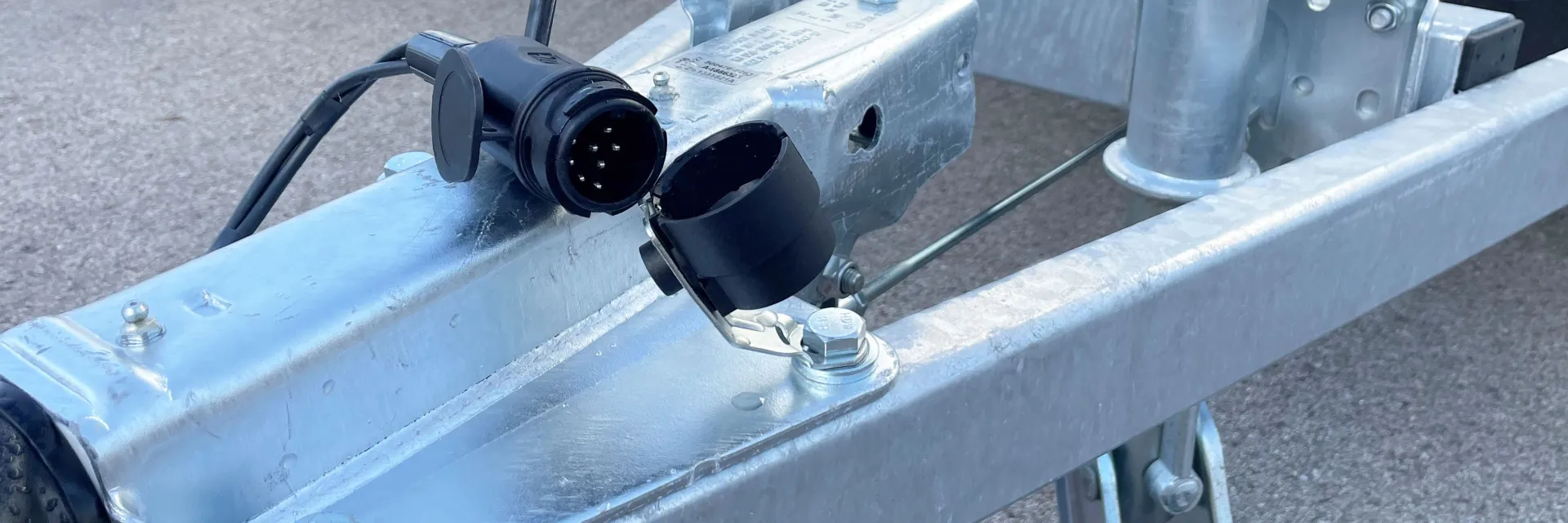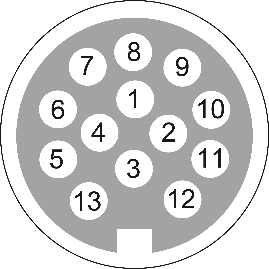


The light or indicator on your trailer does not work properly? Do you want to know more about trailer plugs, plug assignment and charging cable? In this article, we will give you detailed information and tips on the 13-pin and 7-pin plugs and the plug assignment of your trailer:
Every trailer that you move with the car must be supplied with power so that the rear lights, brake lights, indicators and so on work. The trailer plug is required to connect the trailer's lighting to the car's onboard electronics. The trailer connector pin assignment provides information about the assignment of the individual cables on the trailer connector.
There are two different types of connection between trailer and towing vehicle: the 7-pin and the 13-pin connector. The 13-pin connector is the newer version and is found on more modern trailers. Older trailers are usually still equipped with a 7-pin connector. While the 7-pin connector only allows the transmission of basic electrical lighting such as indicators and brake lights, the 13-pin adapter for the trailer coupling offers significantly more functions.
Thus, in addition to the reversing light and the indicator, a 13-pin connector also provides a charging line, a steady plus and a reversing light. Compared to the 7-pin version, the connector is also splash-proof, which prevents damage to the electrical system. All currently built UNSINN trailers are suitable for 13-pin sockets.
13-pin pin assignment according to ISO

7-pole pin assignment according to ISO

The following pin assignment diagram shows the standard assignments of the 7-pole plugs (no. 1-7) and the 13-pole plugs (no. 1-13):
| No. | Designation | Description | Colour |
| 1 | L | Indicator light left | yellow |
| 2 | 54G | Rear fog light | blau |
| 3 | 31 | Ground (pole 1 - 8) | white |
| 4 | R | Indicator light right | green |
| 5 | 58R | Taillight right | brown |
| 6 | 54 | Stop light | red |
| 7 | 58L | Taillight left | black |
| 8 | Reversing light | grey | |
| 9 | optionally occupied | Power supply (steady plus) | blue 2,5 mm² |
| 10 | optionally occupied | Charging cable + for battery | red 1.5 mm² |
| 11 | optionally occupied | Ground for contact 10 | black 1,5 mm² |
| 12 | free | ||
| 13 | optionally occupied | Ground for contact 9 | black 2.5 mm² |
You can also download an overview of the 7-pin and 13-pin plug assignment here.
*UNSINN Fahrzeugtechnik does not assume any warranty or costs incurred on the electrical system of the trailer or the towing vehicle due to incorrect reconnection or connection.
If your car is equipped with a 13-pin socket but your trailer has a 7-pin connection (or vice versa), there is also a suitable solution for this. With the help of an adapter, you can easily connect the old trailer to a modern vehicle and connect the old plug to the newer socket. Tip: If you use an adapter for the plugs, it is advisable to remove it after use so that no water runs over the adapter into the socket.
There is also the option of replacing the old trailer plug with a new 13-pin plug in the long term. You can read about how this works here.
Insufficient care of the connector on the trailer can lead to contact problems with the electrics. If there is a fault, cleaning should never be done with water. Instead, it can help to clean the contacts with contact spray. The spray removes contamination from oil, grease deposits and condensation on electrical contacts.
During maintenance, make sure to keep the connections clean to ensure a proper flow of electricity when hitching the trailer. For optimal trailer hitch maintenance, it is also advisable to check the electrical wiring regularly. In this way, damage can be detected at an early stage or even prevented.
Conclusion: The 13-pin or 7-pin connector is essential for the lighting of the trailer. If you ever damage the connector, it can be repaired using the trailer's wiring diagram. In the event of possible problems with the electrics, contact your specialist workshop or dealer before working on the electrical system. Your UNSINN dealer will be happy to advise you.